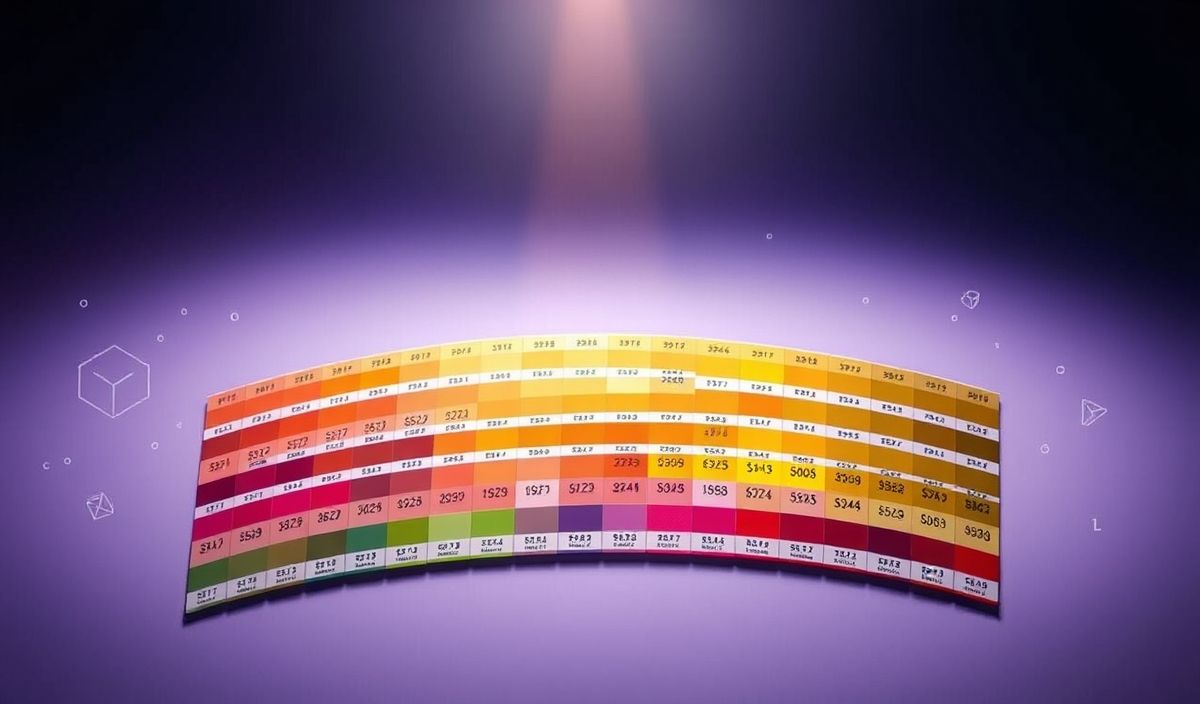Introduction to Delta E
Delta E (ΔE) is a metric for understanding how the human eye perceives color difference. It quantifies the difference between two colors visible to the average human eye. The concept is widely used in various industries such as printing, manufacturing, and digital imaging to ensure color consistency and accuracy.
Primary API and Usage Examples
1. Calculating Delta E
This example demonstrates how to calculate Delta E using the LAB color space, which is more perceptually uniform than RGB.
from colormath.color_objects import LabColor
from colormath.color_diff import delta_e_cie2000
color1 = LabColor(lab_l=50.0000, lab_a=2.6772, lab_b=-79.7751)
color2 = LabColor(lab_l=50.0000, lab_a=0.0000, lab_b=-82.7485)
delta_e = delta_e_cie2000(color1, color2)
print(f'Delta E: {delta_e}')
2. Visualizing Color Difference
Below is an example of how to visualize the color difference between two colors using Matplotlib.
import matplotlib.pyplot as plt
import matplotlib.patches as patches
fig, ax = plt.subplots()
rect1 = patches.Rectangle((0, 0), 1, 1, linewidth=1, edgecolor='r', facecolor='#95a5a6')
rect2 = patches.Rectangle((1, 0), 1, 1, linewidth=1, edgecolor='r', facecolor='#3498db')
ax.add_patch(rect1)
ax.add_patch(rect2)
plt.xlim(0, 2)
plt.ylim(0, 1)
plt.axis('off')
plt.show()
3. Implementing Delta E in a Web Application
The following is an example of a simple web application that allows users to input two colors and calculates the Delta E between them:
<!DOCTYPE html>
<html lang="en">
<head>
<meta charset="UTF-8">
<title>Delta E Calculator</title>
</head>
<body>
<h1>Delta E Calculator</h1>
<form id="delta-e-form">
<label for="color1">Color 1: </label>
<input type="text" id="color1" name="color1" placeholder="#95a5a6"><br>
<label for="color2">Color 2: </label>
<input type="text" id="color2" name="color2" placeholder="#3498db"><br>
<button type="button" onclick="calculateDeltaE()">Calculate</button>
</form>
<p id="result"></p>
<script>
function calculateDeltaE() {
const color1 = document.getElementById('color1').value;
const color2 = document.getElementById('color2').value;
// Simplified Delta E calculation for demonstration purposes
const deltaE = Math.sqrt(
Math.pow(parseInt(color1.slice(1, 3), 16) - parseInt(color2.slice(1, 3), 16), 2) +
Math.pow(parseInt(color1.slice(3, 5), 16) - parseInt(color2.slice(3, 5), 16), 2) +
Math.pow(parseInt(color1.slice(5, 7), 16) - parseInt(color2.slice(5, 7), 16), 2)
);
document.getElementById('result').innerText = 'Delta E: ' + deltaE.toFixed(2);
}
</script>
</body>
</html>
In conclusion, Delta E is a valuable tool for professionals needing accurate color matching and consistency. By leveraging the examples above, you can integrate Delta E calculations into various applications effectively.
Hash: b023dd7a7348ab03aabbdebb89c2699b7dae46182de06bc5f1c38f2ca2f974ed




